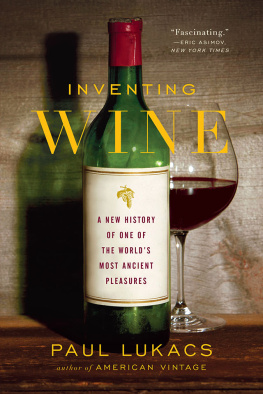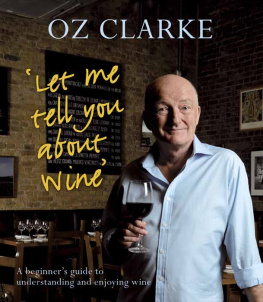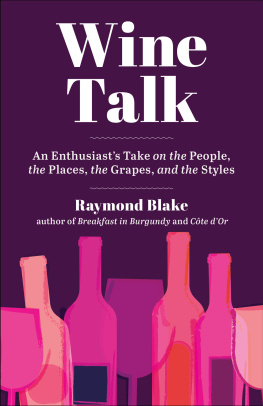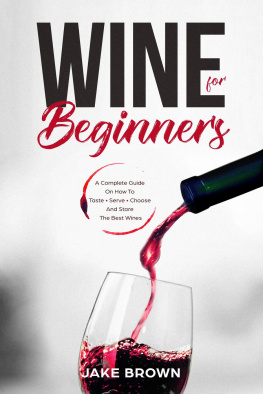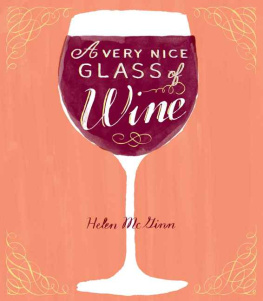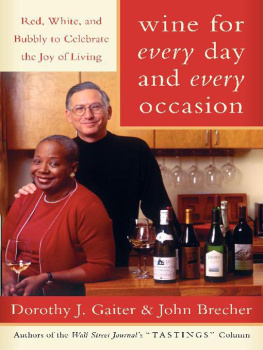
INVENTING
WINE
A NEW HISTORY OF
ONE OF THE WORLDS
MOST ANCIENT PLEASURES
PAUL LUKACS

TO HELEN,
with love
ALSO BY PAUL LUKACS
The Great Wines of America:
The Top Forty Vintners, Vineyards, and Vintages
American Vintage: The Rise of American Wine
Contents
Human beings have been inventing wine for some eight thousand years. Not the natural product, something that occurs on its own whenever the skins of ripe grapes split open, but rather the cultural and artisanal one. Or to be more precise, the cultural and artisnal ones, since men and women over those many years have defined what wine is, and why it matters, very differently. So while people in different times and places have long drunk the same basic chemical substance, they have done so for a wide array of social and cultural reasons, in the process coming up with very different uses for it. Through its extensive history, wine has played various roles, being everything from a vehicle for spiritual communion to a source of bodily nourishment to an object of aesthetic appreciation. In virtually all of them, it has brought pleasure, but pleasure conceived of in a wide range of ways. This is a book about those ways. As a history, it recounts wines passage through time, emphasizing how the various pleasures it provided changed over the millennia.
Most previous accounts of wines past, no matter when they were written, celebrate continuity. Their authors assume a fundamental correspondence between contemporary wines and those that people drank hundreds, even thousands of years ago. This book tells another story. It contends that while wine is old, wine as we know it is new. Far from being the end-point in an unbroken series of vintages stretching back to antiquity, todays wines are the product of a set of radical, even revolutionary changes involving both how wine was produced and why it was drunk. One crucial change involved its secularization, something that only occurred on a wide scale in Europes Middle Ages. Another came during the Renaissance and Enlightenment, with wines initial scientific and technological modernization, and then still another with its quite recent stylistic and qualitative globalization. This book tells the story of those changes, and so is marked as much by disruption as by continuity. It thus offers a new way to view the present as well as the past.
History exists not simply in the past, but more precisely in recollections or reports of the past. After all, history never just happens. Events do, but their significancehow much they matter and to whomdepends almost entirely on the people who recall and recount them. In this regard, it seems significant that the word story lies embedded within the word history, which the Oxford English Dictionary defines first as a relation of incidents... a narrative [or] tale, and only subsequently as an aggregate of past events. Put another way, no matter the subject, those events, being past, necessarily remain finished and forgotten until they live again in the stories men and women tell about them.
Let me acknowledge here at the start that some people may consider the specific subject of this book trivial, and so not really worth reading (or writing) about anew. Its worth noting, however, that many commentators have venerated wine for a very long time. In the Odyssey , Homer characterized wine as something descended from the blessd abodes / A rill of nectar, streaming from the gods. This idea of wine as something sacred was very common in many ancient cultures, and as a consequence people long valued no foodstuff more highly. Wine provided men and women with both physical sustenance and psychological solace. Since it could help them stay or even become healthy, as well as win favor with their gods, they cared less about how it tasted than about what it represented or embodied. Some people held onto this view even in early modern times. Witness James Howell, an English Renaissance writer who, with tongue only partially in cheek, declared, Good wine makes good blood, good blood causeth good humors, good humors cause good thoughts, good thoughts bring forth good works, good works carry a man to heaven, ergo good wine carrieth a man to heaven. Though that is not our twenty-first-century logic, many of us still consider wine to be one of lifes great pleasures. And as the distinguished contemporary wine merchant and author Gerald Asher once noted wryly, Only idiots take their pleasures frivolously.
For many thousands of years, people needed wine, or at least believed that they did. Their specific requirements shifted over time, but they considered wine necessary for their basic existence. That only started to change about five centuries ago, when wine began to assume new form as a cultural choice. Though it took many years for it to become something worth selecting for itself rather than for any alleged benefits it might bring, the shift from need to choice enabled wine to assume modern form. Why people choose it today depends largely on their circumstancestheir desire for conviviality, for what is sometimes called the good life, for sophistication, and, of course, for flavors they think are worth savoring. Less than a century ago, a great many commercial wines, some cheap but others quite costly, tasted spoiled or rotten. Few drinkers risk that sort of unpalatable disappointment today. There are places, parts of the former Soviet Union, for example, and countries in South Asia, where seriously flawed wine still exists in significant volume, but it rarely does for the rest of us. In most parts of the winemaking world, modern science and technology, coupled with a more demanding marketplace, have made bad wine little more than a remnant of times past. We personally may not like a particular bottle, but when we pour a glass, we usually can be certain that the wine in it will be at least chemically sound. Often, of course, it is much more than that. Wine can bring remarkable delights. This book tells the story of those delights, where they came from and how we came to value them. It focuses more on the origin and development of what we enjoy than on the relics of what in all probability we would not even tolerate.
Wine today is extremely popular. Characters in movies and on television drink it, just as newspapers and magazines cover it, and websites and blogs fill cyberspace with discussions about it. Shops specializing in wine carry literally thousands of different selections. Restaurants, cafs, and bars offering long lists of often esoteric choices have proliferated across the globe, and tourism in wine-producing regions has turned into a big business. Not all that long ago, caring about wine as anything more than a simple quaff was the almost exclusive provenance of the wealthy. This was not so much because they alone could afford something better as because very little quality wine was made anywhere. No more. We are blessed today with an abundance of excellent wines coming from every continent save Antarctica, and in much of the wine-drinking world, knowing something about them has become a middle-class passion. But then, the emergence of modern wine, something that began on a limited scale in Renaissance Europe, always accompanied the emergence of the modern bourgeoisie. When that social class expanded, so too did consumers choices. A new market and a new sort of high-quality wine (made with freshly harvested rather than dried, raisined grapes) arrived together, changing forever how people perceived their own wants and desires when they drank it.
Next page
